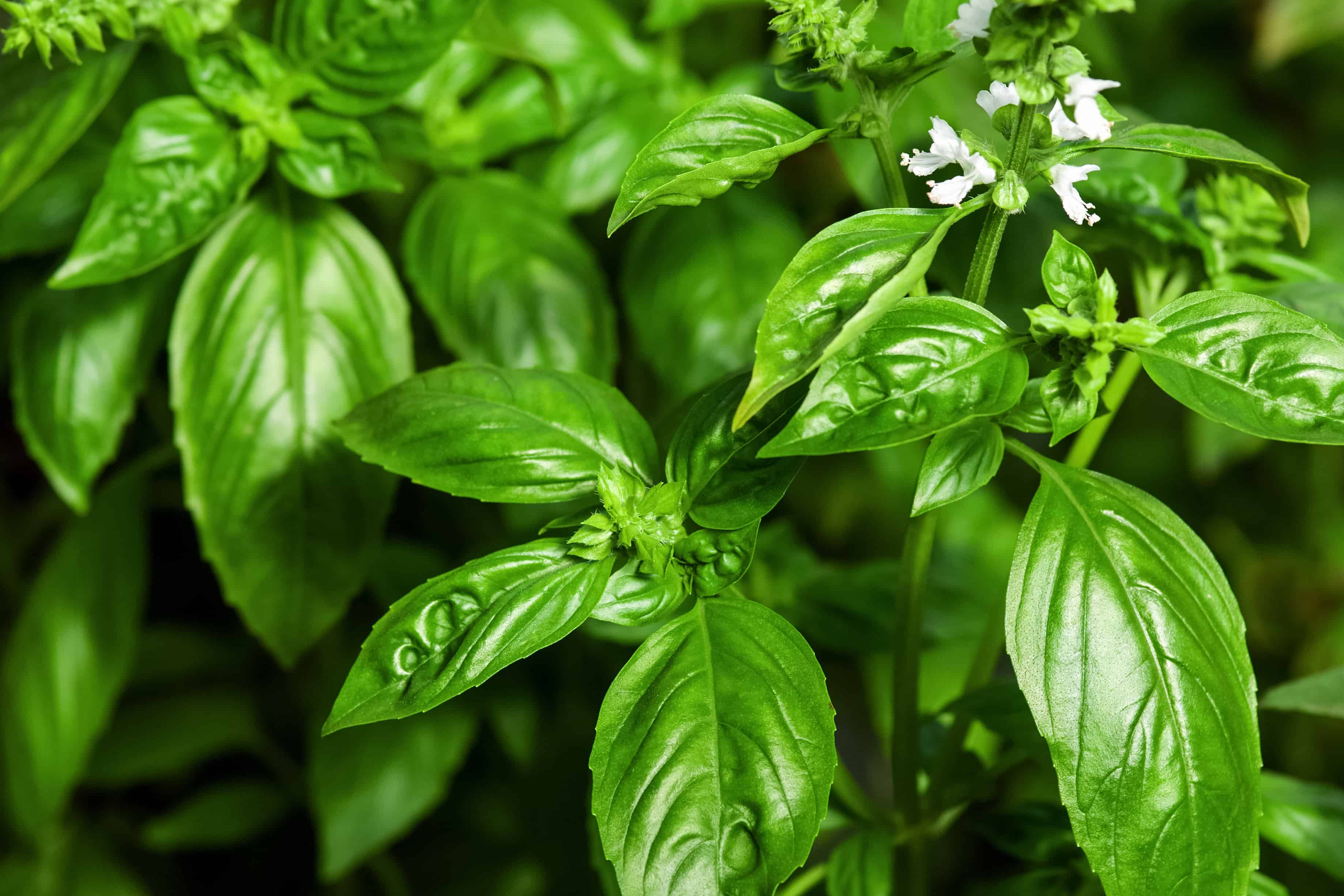Planning your summer garden is an exciting time. First, you get to sort through all your seeds. And then comes the time to decide where to put things. Many gardeners like to plant their crops strategically, with space and care needs at the top of their minds. However, there is another approach – companion planting. Today, we’re looking at companion planting with basil, a popular summer herb. If you’re interested in trying this planting technique, read on to discover the top 20 companion plants for basil.
What Is Companion Planting?
There is an art (and science) behind companion planting. However, in a nutshell, companion planting is the practice of pairing two or more plants near each other. There are multiple thought processes behind the practice. When done right, companion planting can bring in beneficial insects and pollinators, repel or trap harmful pests, improve the flavor of nearby plants, or boost soil fertility.
Not all plants have equal ability to do all these jobs. So, finding the right combination is important. But don’t stress. Much of companion planting comes down to trial and error. You can start with the scientific research that has been done on some pairings or rely on wisdom handed down over the years. Then, it comes down to experimenting in your own garden to see what works for you.
What Are Good Companion Plants for Basil?
Thankfully, basil gets along with many plants. So the options are nearly endless. But there are some plants that this flavorful herb gets along better with. Without further adieu, here are some of the top companion plants for basil.
1. Asparagus
Basil and asparagus make fantastic companion plants. So, if you haven’t dedicated a corner of your garden to this perennial favorite, now’s the time! The combination of the two plants helps to attract beneficial insects and pollinators. Plus, adding the herb near your asparagus crop will help deter asparagus beetles.

Adding basil near your asparagus crop will help deter asparagus beetles.
©DUSAN ZIDAR/Shutterstock.com
2. Beets
One of the problems with planting root crops is that pests absolutely love the tasty greens, and can do some serious damage. Planting basil nearby helps to hide the scent of your beet greens, keeping pesky critters and harmful insects at bay.

Planting basil nearby helps to hide the scent of your beet greens.
©Picture Partners/Shutterstock.com
3. Bell Peppers
We’ve listed bell peppers here, but the combo can really work for any pepper plant. When your basil goes to flower, it attracts pollinators that help improve your pepper plant production. Basil acts as a ground cover to prevent moisture loss. Basil also repels spider mites and unwanted flies.

Bell peppers and basil work well together in the garden.
©Alberto Masnovo/Shutterstock.com
4. Borage
Borage is one of the best possible plants to include near your basil. This stunning and delicate blue flower attracts pollinators and beneficial predatory insects. The latter will help hunt down pests that want to eat the basil before you do. This flower also reportedly improves basil flavor. So why not try the combo out and see if that is true?
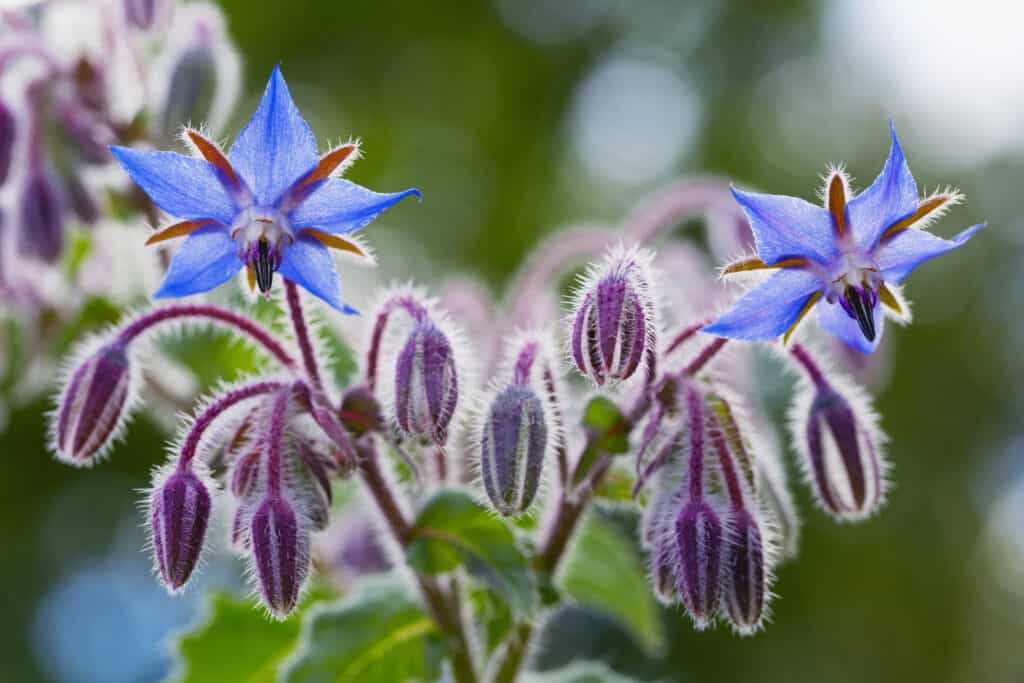
Borage flowers supposedly help improve the flavor of basil leaves.
©matteo sani/Shutterstock.com
5. Carrots
With basil planted nearby, carrot flies and unwanted garden intruders can’t easily smell your carrot crop. That will help protect the plants while they develop.
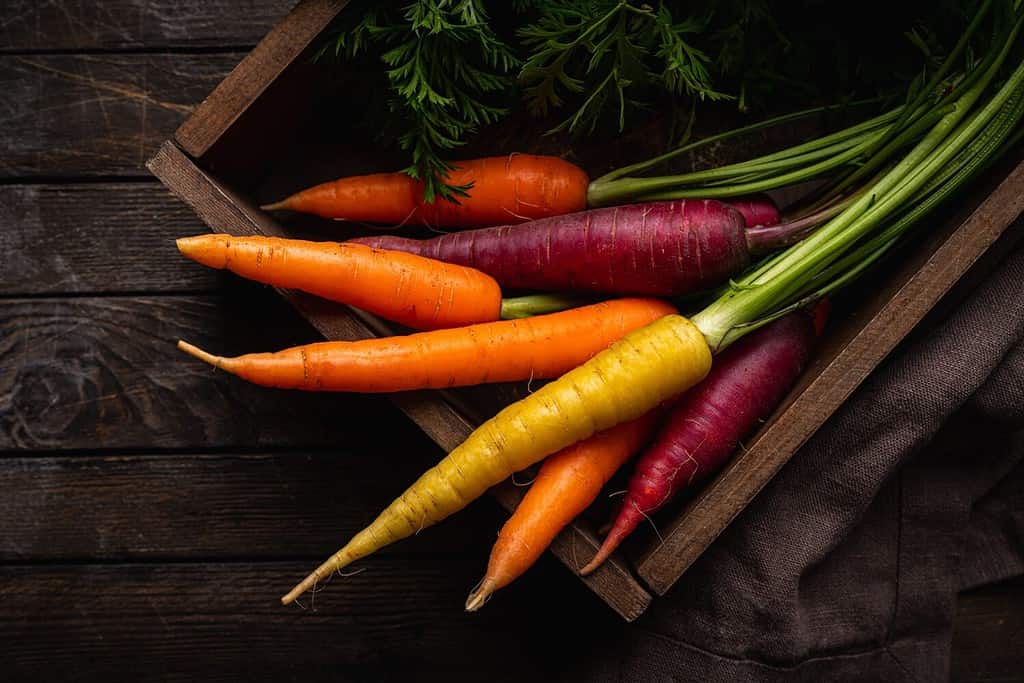
Basil helps protect the plants while they develop.
©Goskova Tatiana/Shutterstock.com
6. Chamomile
This tiny, delicate flower is a beacon for pollinators. And the best part is that it will also help improve your basil plant’s flavor, making the harvest even better! Additionally, chamomile is a fantastic herbal tea, so you can enjoy it for more than just looks.
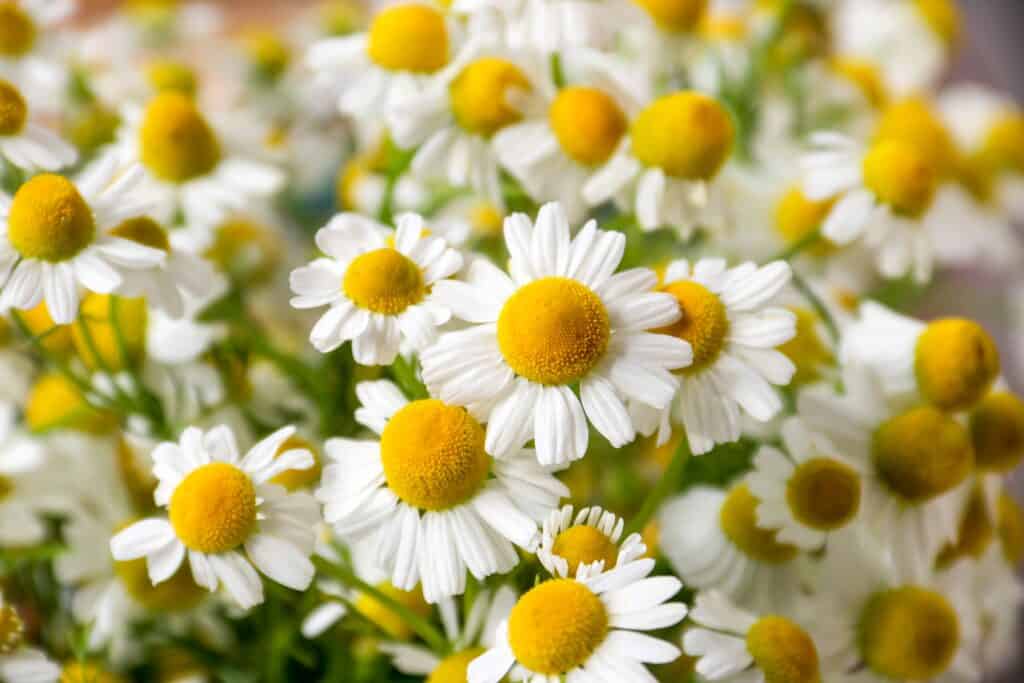
Chamomile attracts pollinators and makes delicious herbal tea.
©Olesya Myzzz/Shutterstock.com
7. Chives
Many people love planting chives in their gardens, which is understandable. This herb packs a powerful punch and dehydrates very well. But what you may not know is that planting chives and basil together will help improve the latter’s flavor. Chives also attract pollinators when they flower.

Plant chives near your basil for improved flavor.
©iStock.com/TG23
8. Cilantro
Not everyone likes cilantro. You pretty much either love it or hate it. However, no matter which camp you fall into, planting cilantro near your basil is worth considering. Cilantro will improve basil’s flavor, help attract much-needed, pollinators, and its oils may repel pests.
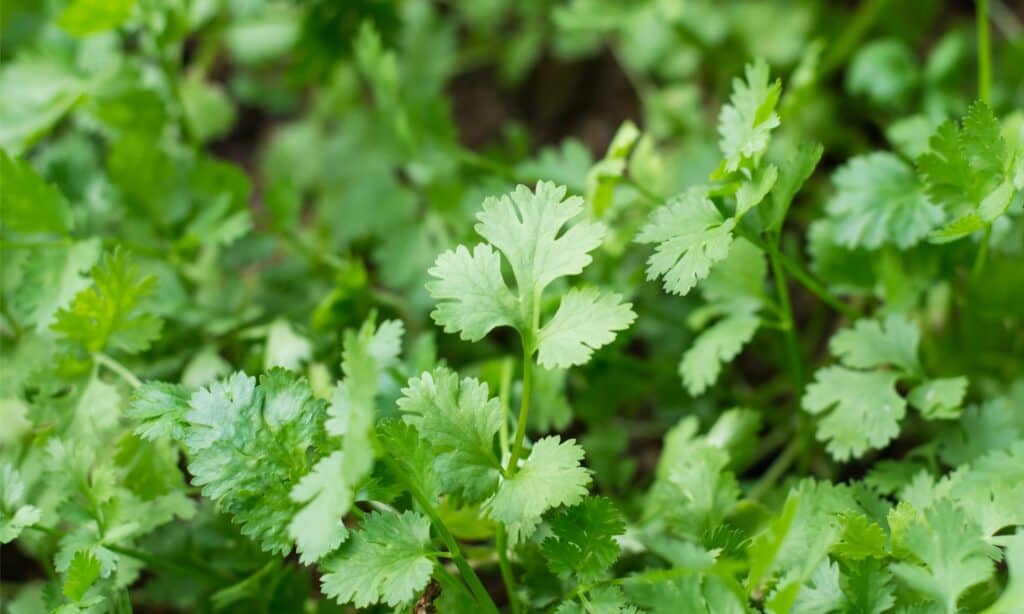
Cilantro, or coriander, makes a great companion plant for basil.
©iStock.com/Tevarak
9. Dill
One of the quintessential summer herbs can do much more than make a mean pickle! Planting dill nearby will enhance the flavor profile of your basil leaves. And, on top of that, bees and other pollinators absolutely love visiting dill’s tiny flowers.
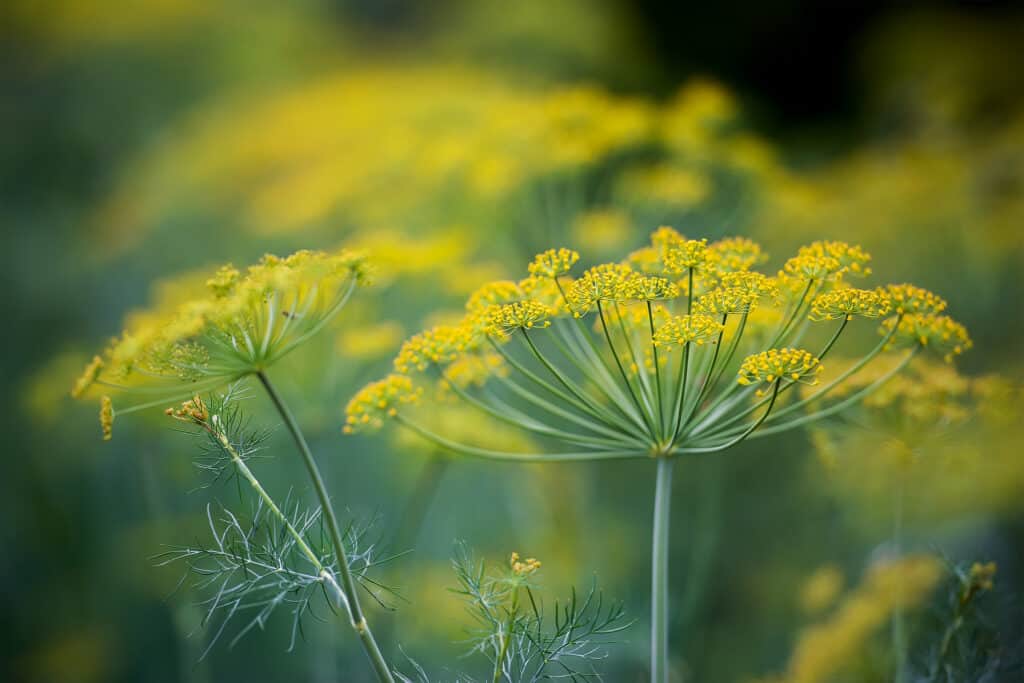
Dill is one of the top basil companion plants out there.
©PaniYani/Shutterstock.com
10. Garlic
Anyone who works with or eats garlic knows that it has a potent smell. But guess what…you’re not the only one who notices. The pungent garlic aroma works to repel whiteflies, aphids, and spider mites in the garden. So consider planting some near your basil to protect it from unwanted pests.
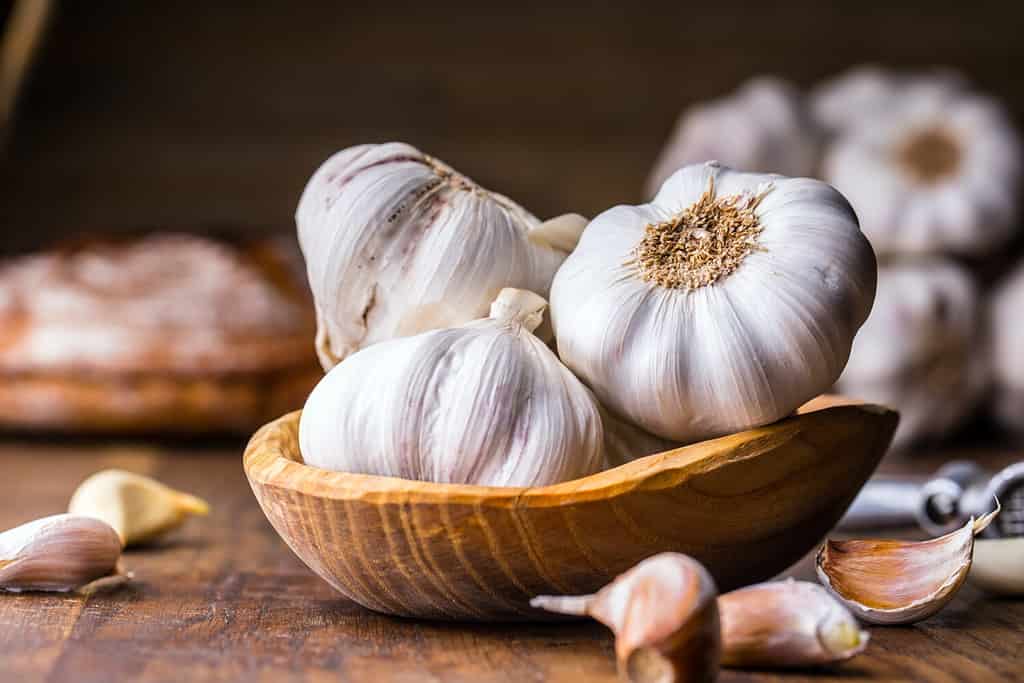
The pungent garlic aroma works to repel whiteflies, aphids, and spider mites in the garden.
©Marian Weyo/Shutterstock.com
11. Marigolds
When you research companion planting, you will likely see marigolds mentioned everywhere. And there is a good reason that happens. This lovely flower is a best friend to countless garden vegetable plants. Its blooms attract beneficial insects like ladybugs and parasitic wasps. Inviting those into your garden will keep unwanted pests at bay. They also attract pollinators, which are important for countless vegetables. But, more specifically, marigolds deter nematodes that like to feed on basil roots. There’s no downside to adding them to your garden.
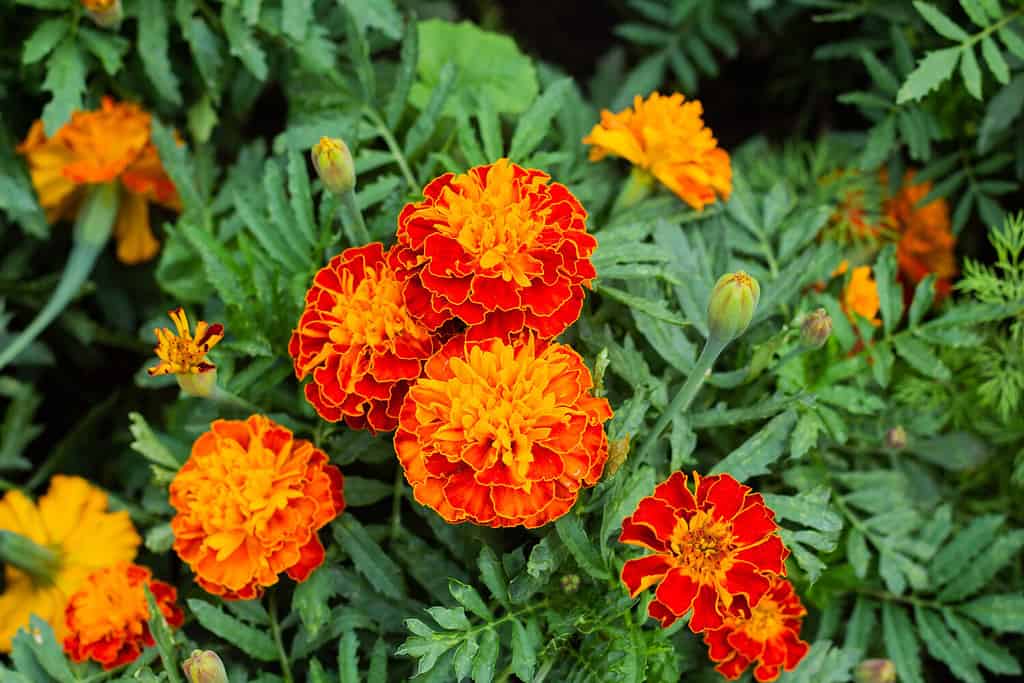
Marigolds deter nematodes that like to feed on basil roots.
©FunFamilyRu/Shutterstock.com
12. Marjoram
While marjoram isn’t as common as other herbs, it packs a powerful punch. This flavorful plant repels pests and attracts beneficial insects. Additionally, marjoram likes the same growing environment as basil. So you can plant them side by side without worry.
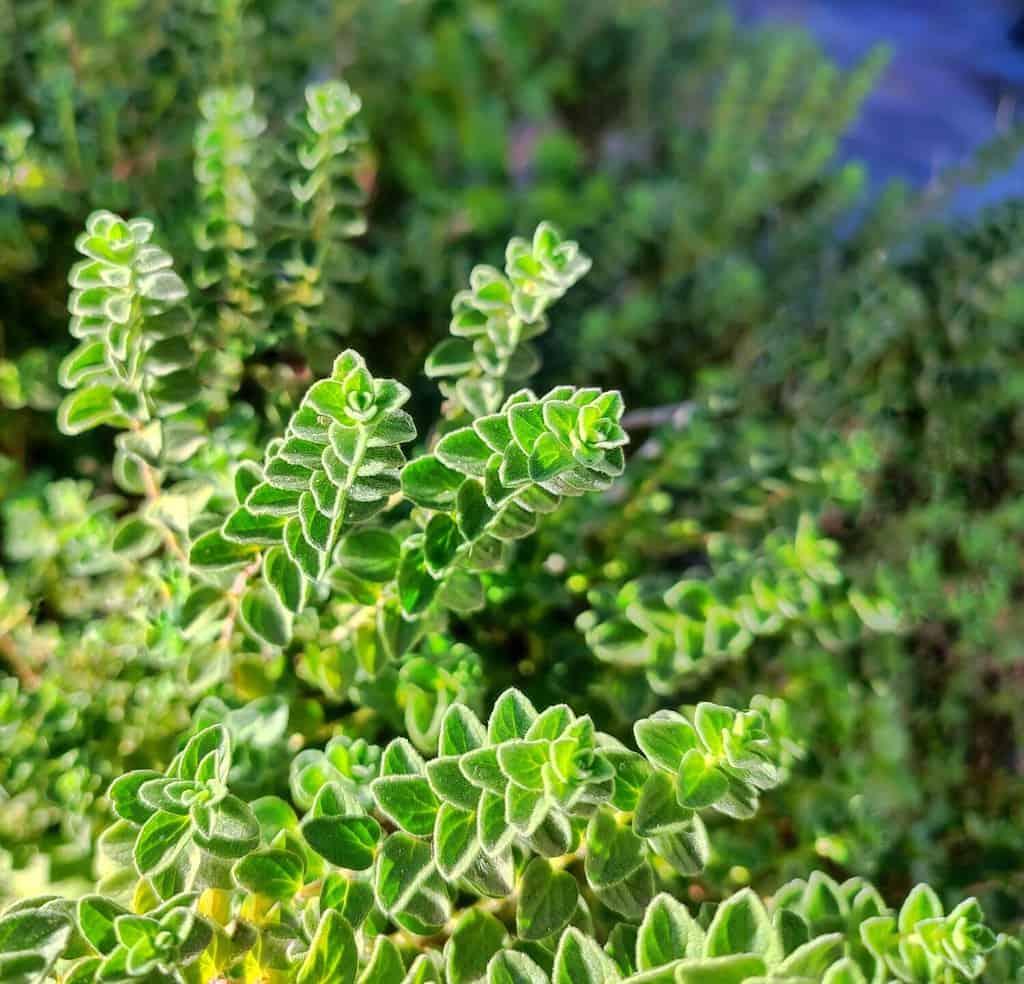
Marjoram repels pests and attracts beneficial insects.
©The_AA’s/Shutterstock.com
13. Nasturtium
Nasturtiums are the perfect trap crop for any garden. Aphids and other pests get attracted to the plant and will leave your beautiful basil alone.
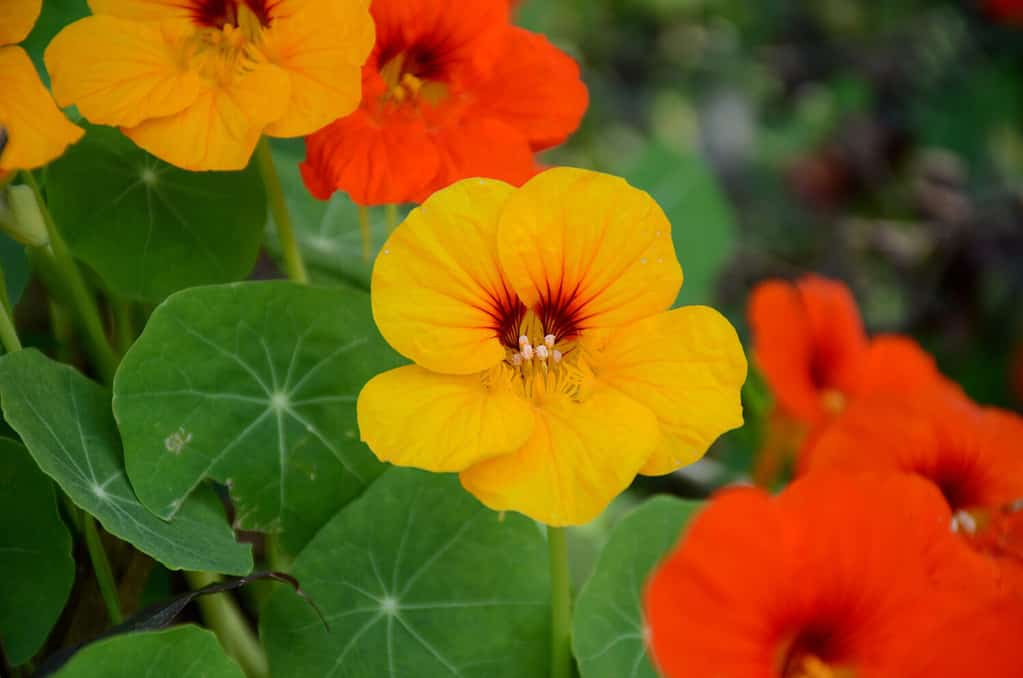
Nasturtiums will attract pests potentially dangerous for your basil.
©Amit kondal/Shutterstock.com
14. Oregano
Not all herbs work well when they get planted next to basil. Thankfully, oregano does! Plant some near your basil plants for improved flavor to both herbs. Additionally, when oregano blooms, it helps attract necessary pollinators.
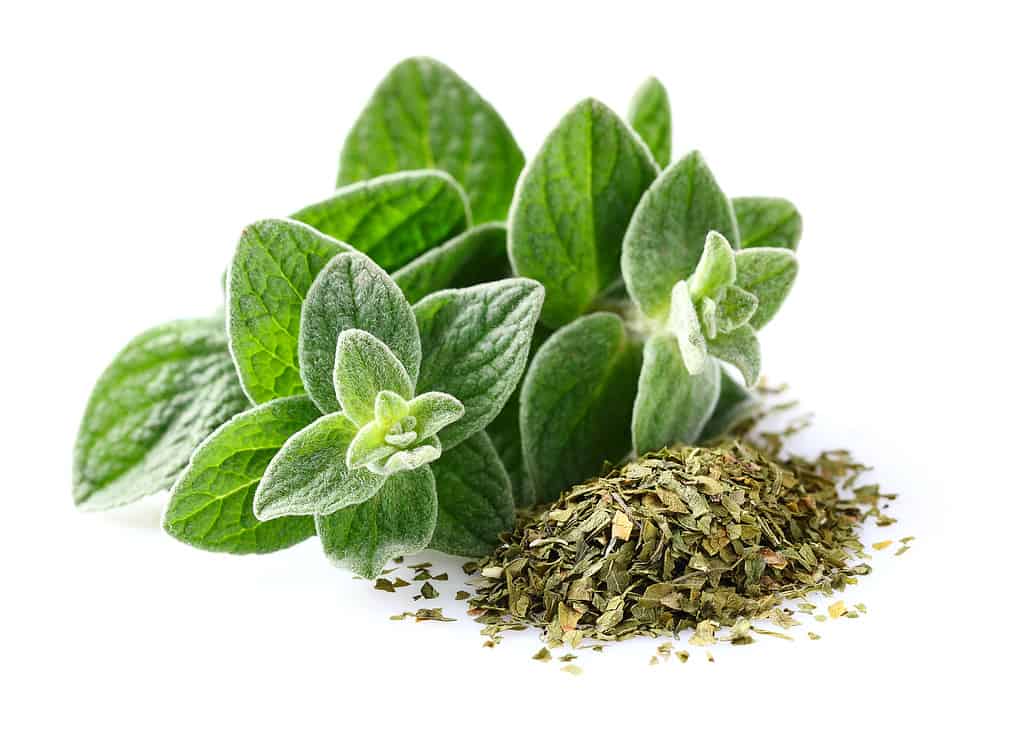
Oregano thrives in the same conditions that basil does.
©dionisvero/ via Getty Images
15. Parsley
This slow-growing herb is a fantastic friend of basil. When planted near each other, both will end up with more flavorful leaves. Parsley will also bring in pollinators when it blooms. But, if you want to do this pairing, give your parsley a slight headstart.
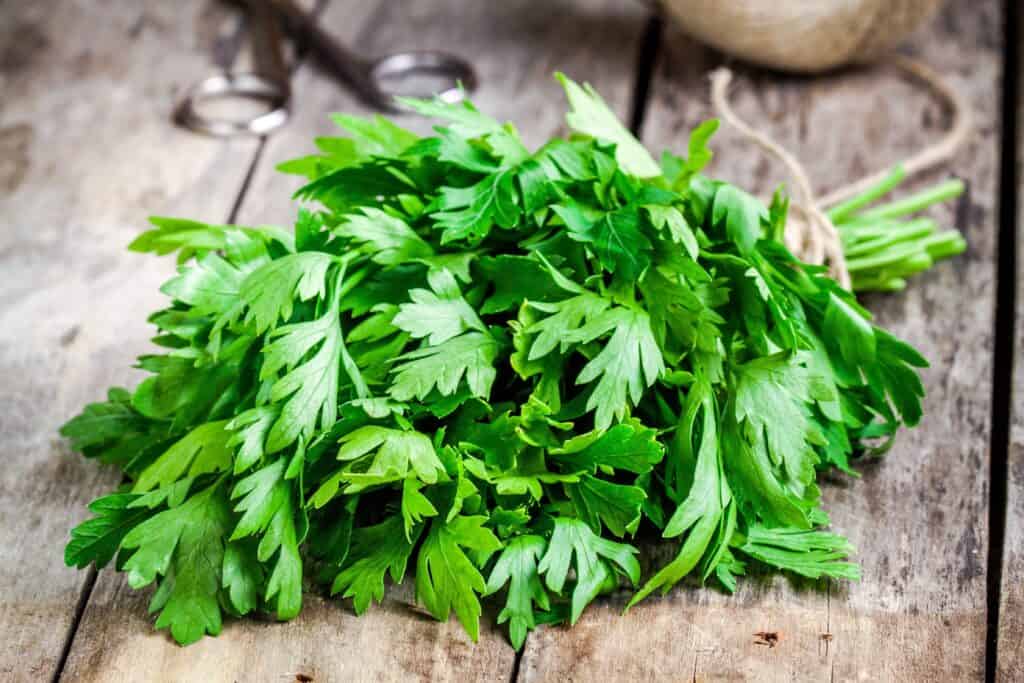
Parsley and basil work well together and may help improve each other’s flavor.
©nblx/Shutterstock.com
16. Parsnips
Keep carrot flies, critters, and other harmful pests away when you plant basil near your parsnips. Since this root crop takes such a long time to develop, it is critical to protect it as much as possible.
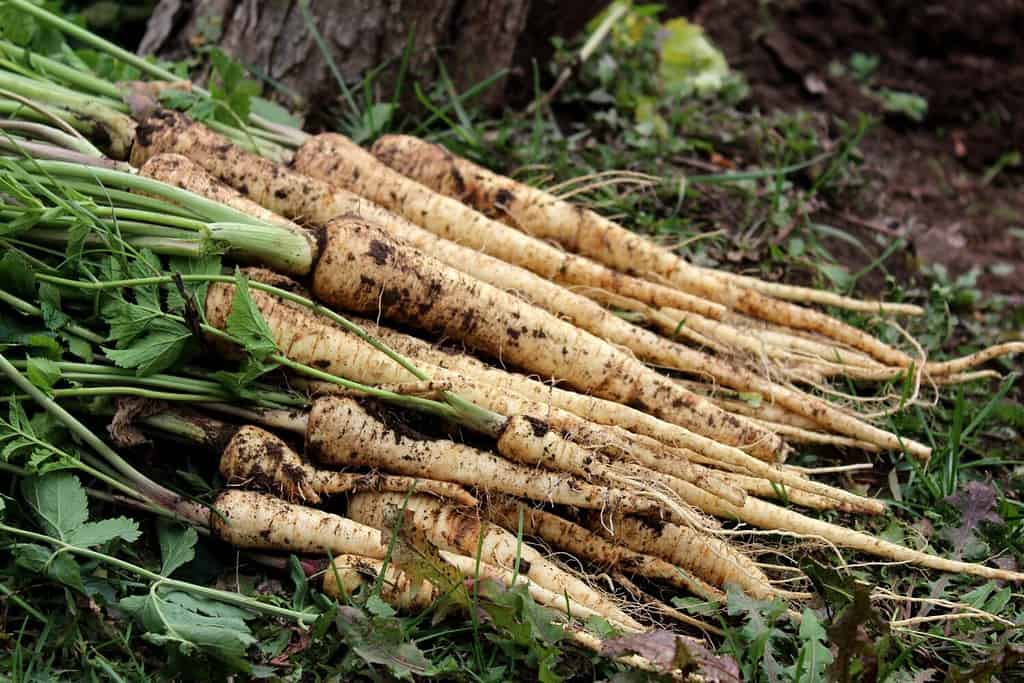
Basil is ideal for protecting parsnips from harmful pests.
©Svetlana SG/Shutterstock.com
17. Potatoes
Plant some basil near your potato plants for a surprising partnership. It likes the moist environment your potato plants need. And the herb helps to repel pests that like to plague growing potato plants.
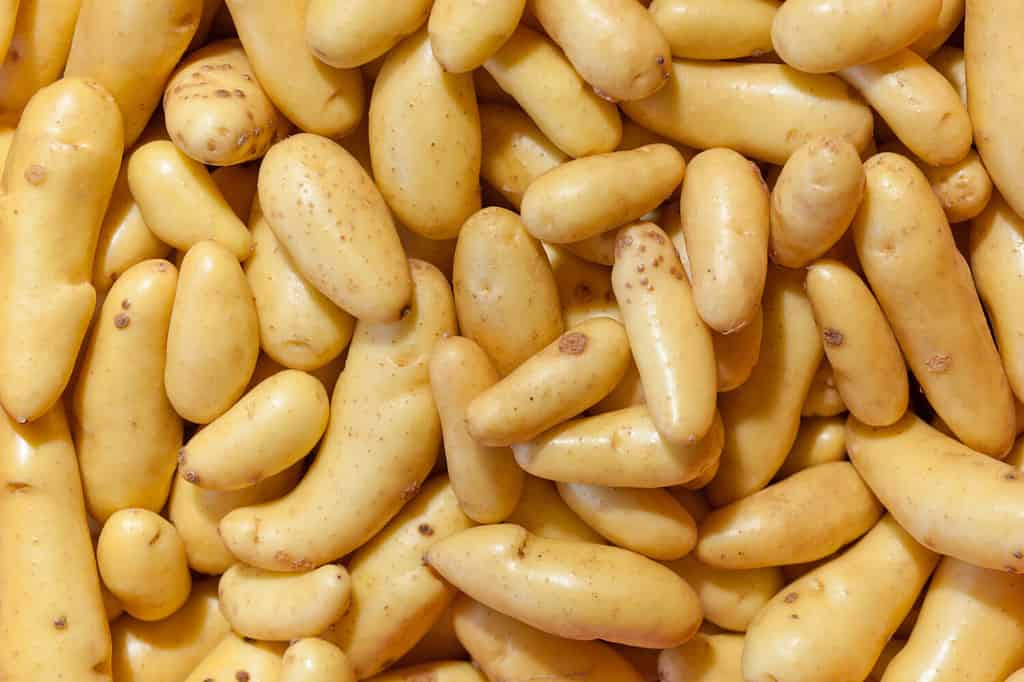
Basil helps to repel pests that like to plague growing potato plants.
©Pi-Lens/Shutterstock.com
18. Radishes
Basil hides the scent of your radish greens and will help keep pests away. Plus, they work well when interplanted together. Since radish greens grow lower to the ground, they won’t shade out your basil plants.

Basil hides the scent of your radish greens and will help keep pests away.
©Natallia Ploskaya/Shutterstock.com
19. Tomatoes
What says summer more than the combination of tomatoes and basil? But they don’t just make the ideal culinary pairing. The two are phenomenal garden companions as well. Basil works to repel tomato hornworms and thrips. Plus, the herb can help boost tomato yield.
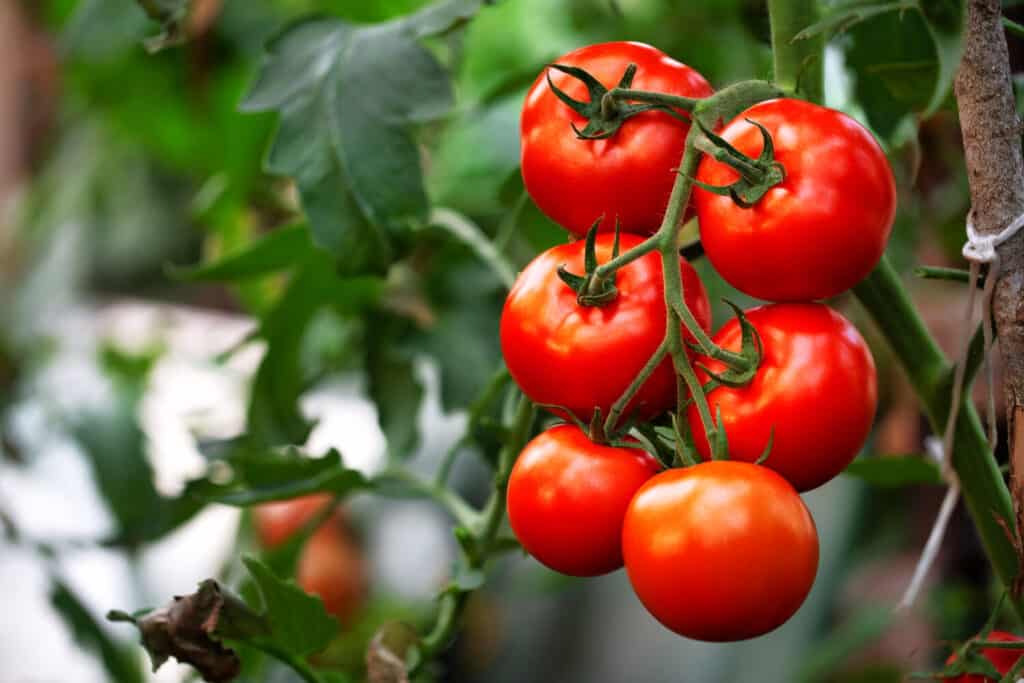
Tomatoes and basil are the perfect pair!
©eugenegurkov/Shutterstock.com
20. Turnips
Plant basil near your turnips to mask the scent that would otherwise attract harmful insects or small animals.
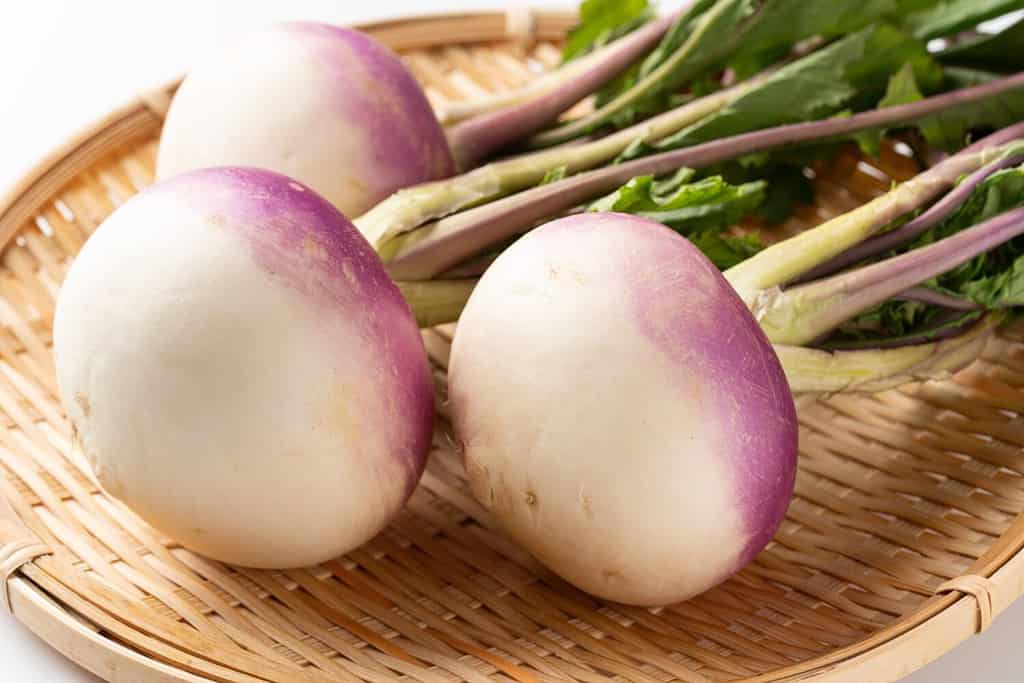
Turnips are great for masking the basil scent.
©Hanasaki/Shutterstock.com
What to Avoid Planting Near Basil
Since basil gets along so well with so many plants, it may be tempting to assume that you can plant anything near them. Unfortunately, that is not the case. Some vegetables and herbs do not get along with basil at all. Here are a few to avoid.
Cucumbers
It may come as some surprise that basil and cucumbers don’t get along. However, if you plant them near each other, you risk negatively impacting the flavor on both sides. And cucumbers are moisture-hogs, leaving little available water for your basil plants.
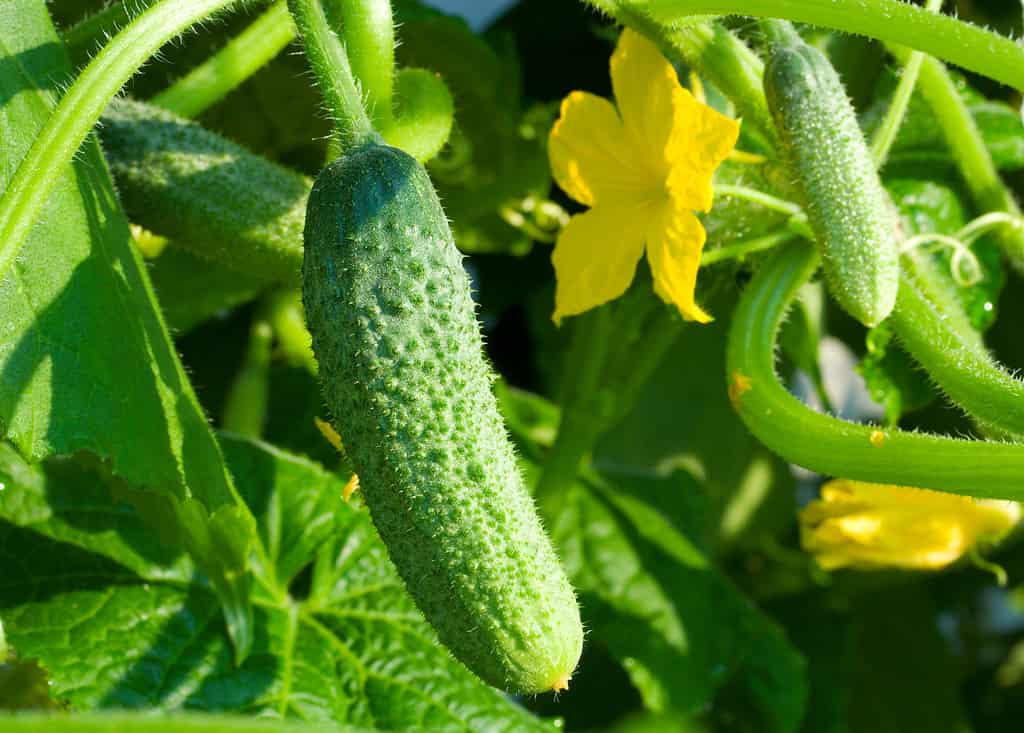
Cucumbers will steal valuable moisture from basil plants.
©Andrey Shtanko/Shutterstock.com
Fennel
Fennel is a perennial vegetable that doesn’t get along with anything. That doesn’t mean you can’t plant it. It just likes its own space. Fennel is allelopathic and can damage or kill other nearby plants, including basil.
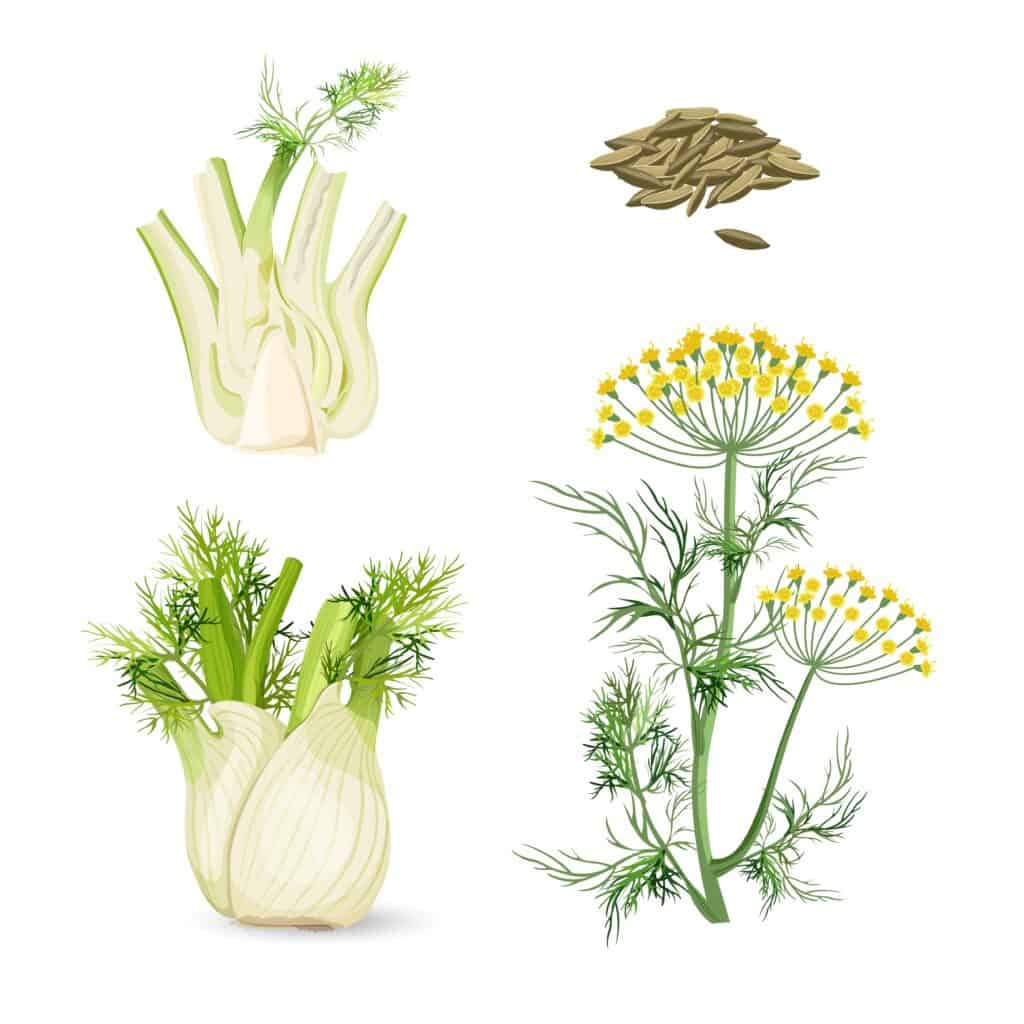
Fennel doesn’t get along with most vegetables.
©iStock.com/Godruma
Sage
It’s not that sage and basil don’t get along per se. However, the two herbs like drastically different growing conditions. If you plant sage near your basil, one of the plants won’t thrive.
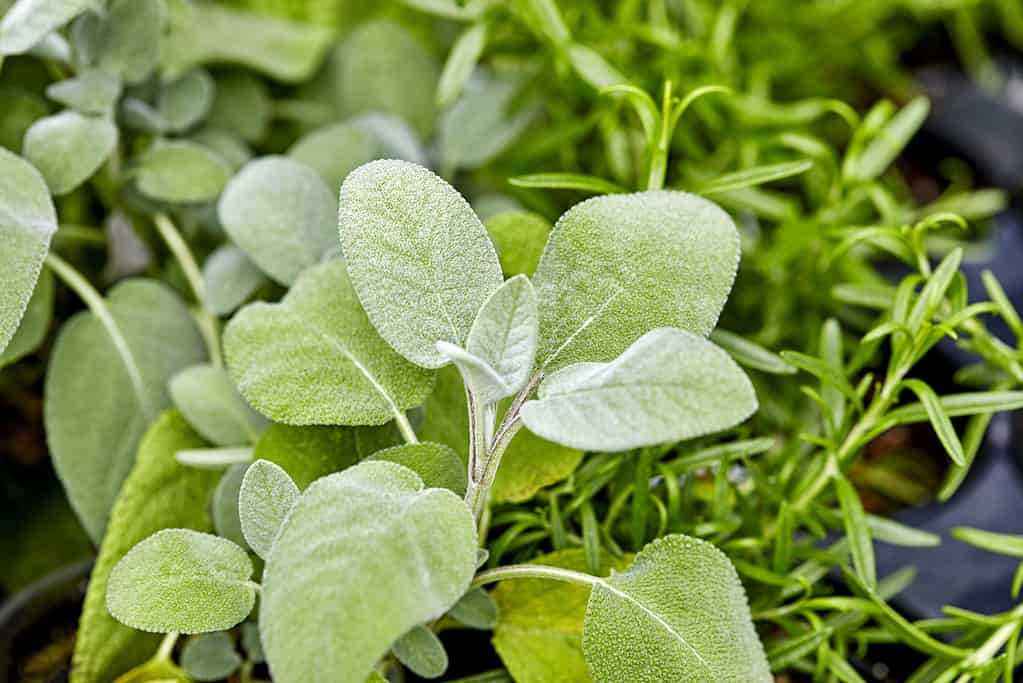
Plant sage and basil apart from each other for both plants to thrive.
©iStock.com/wingedwolf
Rosemary
Like sage, rosemary likes markedly different growing conditions than basil. Keep the two apart for the best results.
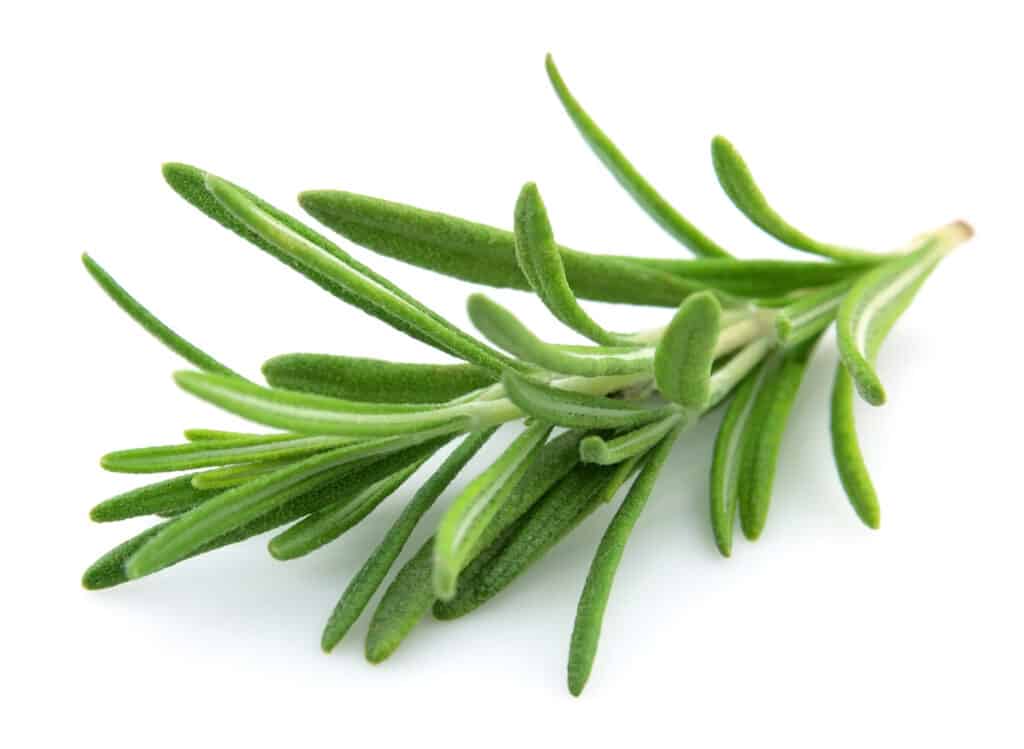
Rosemary prefers drier conditions than basil likes.
©iStock.com/Volosina
Thank you for reading! Have some feedback for us? Contact the AZ Animals editorial team.

